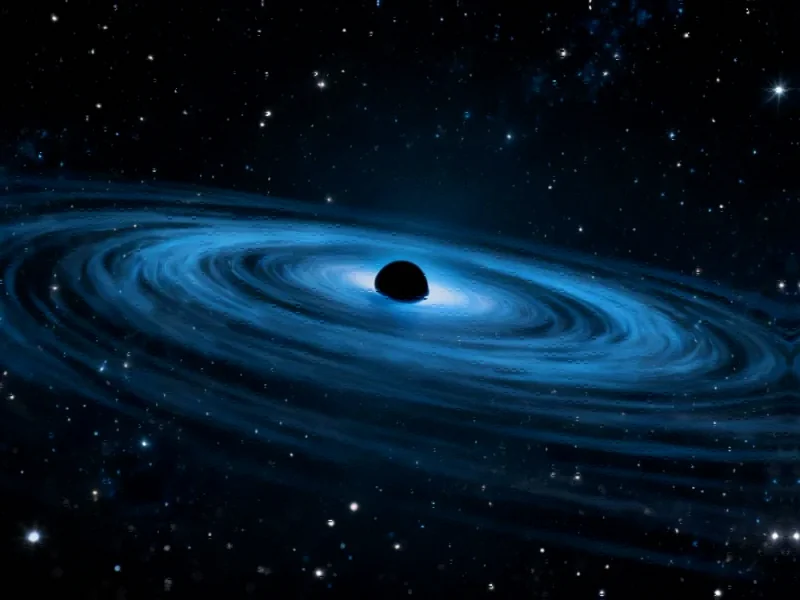Revolutionary Detection of Invisible Cosmic Structures
In a landmark achievement that pushes the boundaries of astronomical observation, an international team of researchers has identified the smallest dark object ever detected in the universe—weighing approximately one million solar masses. This discovery represents not just a cosmic breakthrough but a triumph of computational power and global telescope coordination, demonstrating how advanced technology can reveal structures that emit no light or detectable radiation.
The detection was made possible through gravitational lensing, where astronomers observed how the object’s gravity subtly warped light from distant sources. “It’s an impressive achievement to detect such a low mass object at such a large distance from us,” said Chris Fassnacht, professor at UC Davis and co-author of the Nature Astronomy paper. This finding opens new possibilities for understanding the fundamental nature of dark matter and its role in cosmic structure formation.
Computational Power Behind Cosmic Discovery
The research team utilized an Earth-sized virtual telescope created by synchronizing instruments across continents, including the Green Bank Telescope in West Virginia, the Very Long Baseline Array in Hawaiʻi, and the European Very Long Baseline Interferometric Network. This global network required sophisticated industrial computing systems to process the enormous datasets generated by these observations.
The object appeared as only a tiny “pinch” within warped images—a subtle distortion that required advanced algorithms and computational power to identify. This approach demonstrates how cutting-edge technology is enabling discoveries that were previously impossible, much like how recent technology in other fields is transforming what’s possible in scientific research.
Implications for Dark Matter Theories
The discovery provides crucial support for the cold dark matter theory, which forms the basis of our current understanding of galaxy formation. “Given the sensitivity of our data, we were expecting to find at least one dark object, so our discovery is consistent with the so-called ‘cold dark matter theory,'” explained lead author Devon Powell from the Max Planck Institute for Astrophysics.
This finding represents a hundred-fold improvement in detection sensitivity compared to previous gravitational lensing studies. The object could either be a dense clump of dark matter or an inactive dwarf galaxy—its exact nature remains one of astronomy’s compelling mysteries. Understanding these industry developments in cosmic structure detection parallels advances in other scientific fields where precision measurement is crucial.
Technological Innovation Driving Cosmic Research
The methodology developed for this discovery has far-reaching implications for future astronomical research. By proving that current technology can detect such faint, hidden masses, astronomers now have a powerful new tool for mapping the invisible components of our universe.
This breakthrough in detection capability mirrors related innovations in microscopic imaging and cellular research, where advanced instrumentation is revealing previously invisible structures. Similarly, understanding these cosmic phenomena requires the same level of technological sophistication as studying complex biological systems or neural pathways in the brain.
Future Directions in Cosmic Exploration
The research team is now analyzing additional data to better understand the nature of this dark object and searching for similar structures elsewhere in the sky. The ability to detect such low-mass objects opens new possibilities for testing dark matter theories and understanding the fundamental building blocks of cosmic structure.
As detection methods continue to improve, astronomers anticipate discovering more of these elusive objects, potentially revolutionizing our understanding of dark matter. This ongoing research represents the cutting edge of cosmic exploration, where technological advancement and scientific discovery progress hand-in-hand, reflecting broader market trends in scientific computing and data analysis.
The studies detailing this discovery were published on October 9, 2025, in Nature Astronomy and the Monthly Notices of the Royal Astronomical Society, marking a significant milestone in both astronomical research and the technological capabilities that make such discoveries possible.
This article aggregates information from publicly available sources. All trademarks and copyrights belong to their respective owners.
Note: Featured image is for illustrative purposes only and does not represent any specific product, service, or entity mentioned in this article.



